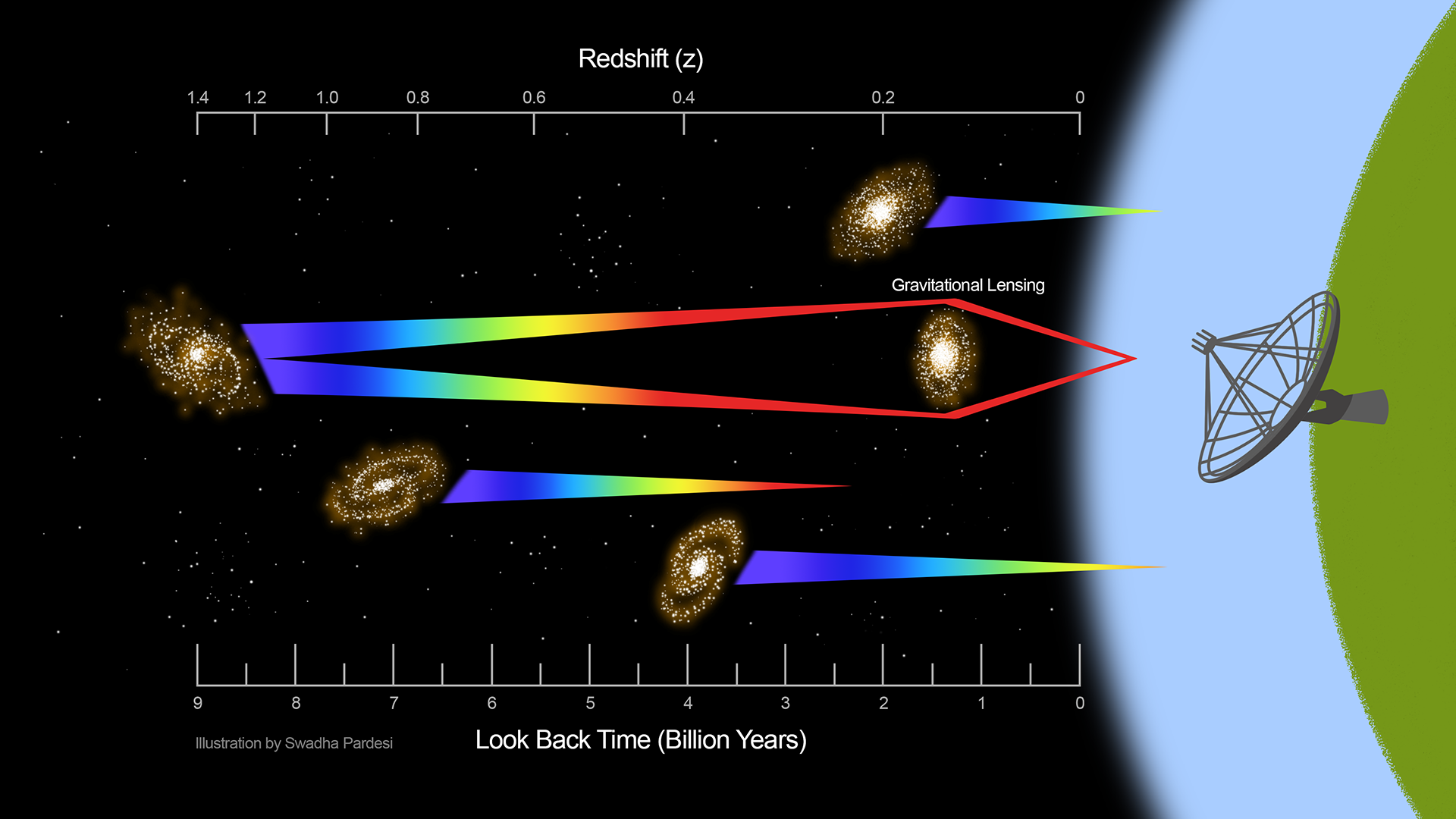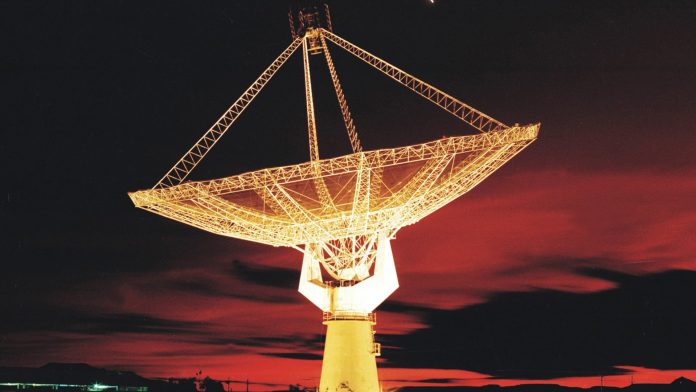Astronomers have identified a radio signal from the most distant galaxy to date using the Giant Metrewave Radio Telescope in India.
The research team, comprised of experts from Montreal and India, detected the radio signal from the distant star-forming galaxy known as SDSSJ0826+5630 at a specific wavelength known as the 21 cm line – the first time this type of radio signal has been detected at such a significant distance. The discovery may help to uncover the enigmatic secrets of the early Universe.
The study, ‘Detection of H I 21 cm emission from a strongly lensed galaxy at z ∼ 1.3’, is published in the Monthly Notices of the Royal Astronomical Society.
Radio signals reveal how stars form
The mechanisms of how stars form in distant galaxies have long puzzled scientists. Astronomers have tried to solve this mystery using radio signals detected from nearby galaxies; however, these signals become weaker the further the galaxy is situated from Earth, which makes it challenging for traditional radio telescopes to observe.
Arnab Chakraborty, a Post-Doctoral Researcher at McGill University, explained: “A galaxy emits different kinds of radio signals. Until now, it’s only been possible to capture this particular signal from a galaxy nearby, limiting our knowledge to those galaxies closer to Earth.
“But thanks to the help of a naturally occurring phenomenon called gravitational lensing, we can capture a faint signal from a record-breaking distance. This will help us understand the composition of galaxies at much greater distances from Earth.”
Co-author Nirupam Roy, an Associate Professor in the Department of Physics at the Indian Institute of Science, added: “Gravitational lensing magnifies the signal coming from a distant object to help us peer into the early Universe. In this specific case, the radio signal is bent by the presence of another massive body, another galaxy, between the target and the observer. This effectively results in the magnification of the signal by a factor of 30, allowing the telescope to pick it up.”

Illustration showing detection of the signal from a distant galaxy. Credit: Swadha Pardesi
What did they find out about SDSSJ0826+5630?
The team successfully identified a radio signal from SDSSJ0826+5630 and analysed its gas composition – discovering the atomic mass of the has content in the galaxy is almost double the mass of the stars visible to us. This radio signal was emitted when the Universe was just 4.9 billion years old, revealing unprecedented insights into the early Universe.
Chakraborty said: “It’s the equivalent to a look-back in time of 8.8 billion years.”
What can gravitational lensing teach us about the Universe?
The researchers explained that the results signify the feasibility of using gravitational lensing to observe distant galaxies, opening new opportunities for investigating the cosmic evolution of stars and galaxies with low-frequency radio telescopes.









